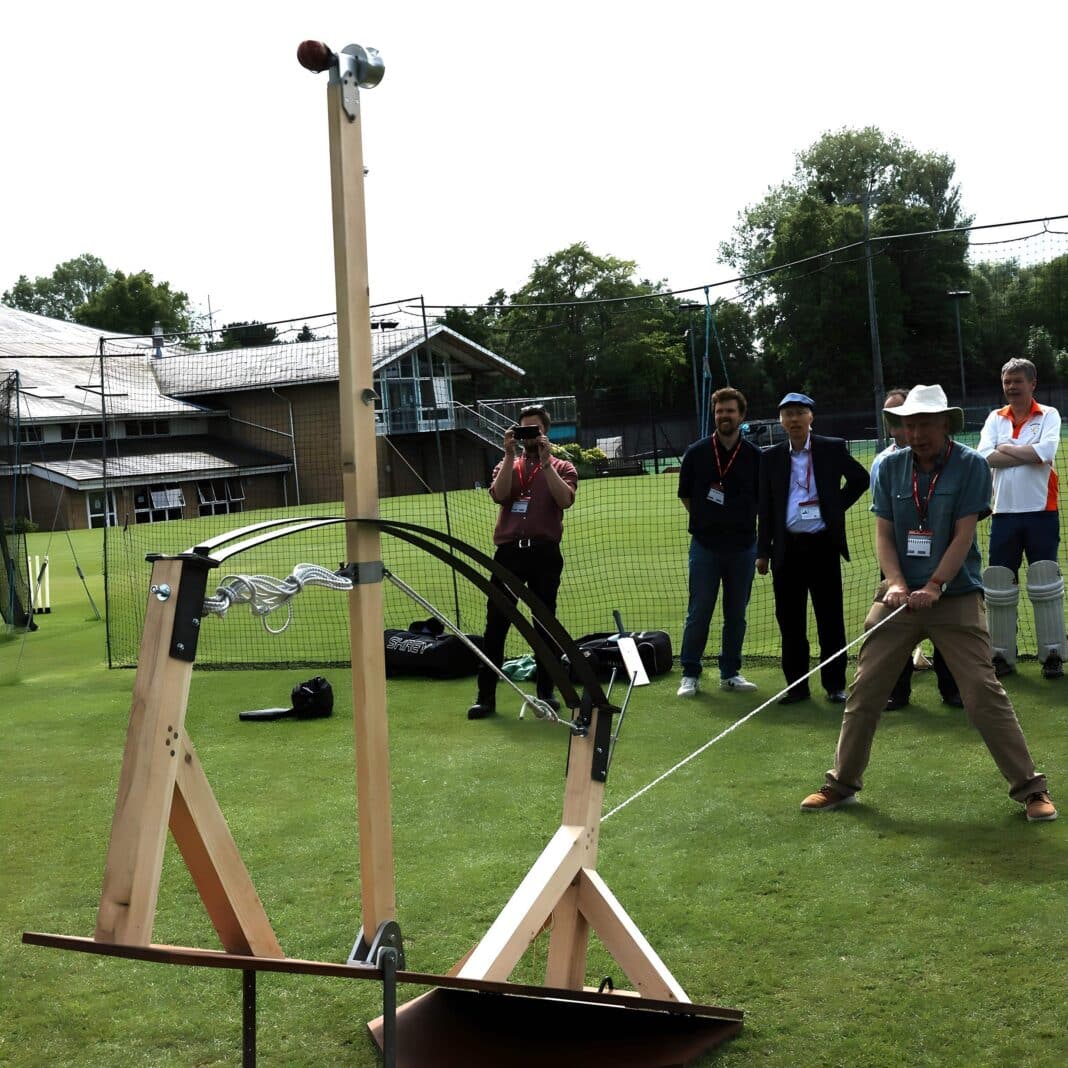Engineers at Cambridge have fully reconstructed one of the world’s oldest known examples of a bowling machine. The machine successfully bowled out legendary Australian batsman Victor Trumper during a visit to Cambridge as part of the 1909 Ashes Tour.
Using patent illustrations and an old photograph discovered online, the engineers brought the 2-metre tall contraption to life using materials that would have been available when Dr John Venn – who first described what is now known as Venn Diagrams, was President of Gonville & Caius College – created more than 120 years ago.
According to Hugh Hunt, Professor of Engineering Dynamics and Vibration, the century-old machine “is a great story and an ingenious device, and at the time would have been in many newspapers, but now it’s not remembered outside the cricket world.”
Professor Hunt, who has a research interest in “spinning things that fly,” said that most people learn about the Venn Diagram at school. Still, few know about his quirky side, adding that “he invented a bowling machine using wood and string and maths, which bowled out members of the Australian cricket team more than a hundred years ago.”
“So the idea behind the project was to recreate a bit of history and to show how much fun you can have with maths.”
Thomas Glenday, head of design and technical services, said they had little drawings to work with: “It meant we had to sketch it out for ourselves, figure out how the machine was going to work, and how it replicates the skill and speed of a spin bowler…the spin has been the key piece, and probably the most complicated part of the design.”
‘Historic relic’
They started with a one-fifth-scale machine model using coil springs before upscaling this with bungee cords. Tests showed the machine could bowl at about 33mph (53km/h), and Mr Glenday said he was “very pleased” with the final product:
“It would be nice to throw balls at 100mph, but it’s not designed to be a production machine. It’s a historical relic and should be treated as such.”
Beyond the technical challenges, an important consideration has been ensuring that the reconstructed machine is historically authentic.
“It’s a fun project, but we definitely wanted it to look the part,” Mr Glenday said. “We used high-quality hardwood, and not much is made from wood these days, particularly for a device like this. But back then, it was where the skill set was – people were used to working with wood, which has natural faults and moves that are not necessarily square. Today, it would have been carbon fibre, and you’d be fabricating the pieces with a 3D printer.”
- Click here for Wood Central’s special feature on timber and cricket.






